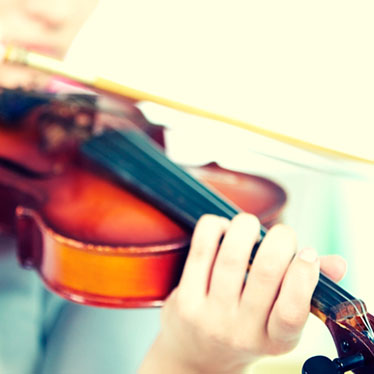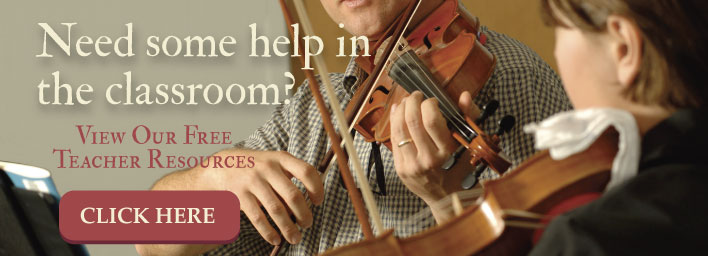Improve Your Students' Bow Technique

If you’ve been searching for exercises, tricks, and other inspired ways to help your students develop their bowing mechanics, odds are that you’ve found a variety of practice drills that emphasize short bow and long bow repetitions. And, depending on how long you’ve been instructing students in the art of violin, you’ve probably developed some effective ways to teach straight bowing.
Indeed, teaching students how to properly execute the straight bow technique is possibly one of the most difficult challenges violin teachers encounter. Yet, sometimes putting emphasis on “straight” bowing can confuse beginners, creating the erroneous impression that the bow moves in a vertical line. And, if you’ve experienced difficulties in getting your students to further develop proper bowing mechanics, explaining that the bow moves in an arc—around the string—after they have mastered straight bowing, can help.
However, there are also many more issues to address when instructing students in proper bowing techniques. Tension alone is often the source of a variety of problems that can plague even seasoned violinists.
The violin is an expressive instrument that responds to subtle changes in bowing pressure, speed, tilt, and placement, and when tension is factored in, the technical areas of playing are negatively affected—you basically get poor quality tone and other unpleasant results.
Students need to understand how to bow straight, but they also need combine that concept with the differences created by pressure, speed, and soundpoint placement; yet to be effective, those mechanics need to be executed with ease, comfort and agility. To develop those skills, teachers must first identify what is causing the tension, and then work to remove it. By recognizing the cause of the tension problem, you can help your students overcome it.
Fingering Issues
Too much finger pressure locks the hand on the neck of the violin and causes the student to apply counter-pressure from the thumb, which means he or she gets less and less ease of movement. The vibration is stiff, slow and clumsy, which produces even more anxiety which in turn creates more muscle contraction. To help overcome this issue, stress the importance of applying the minimum amount of pressure on the fingerboard with your students—just enough to produce the right sound.
Hand placement on the neck can also contribute to tension. If it’s too high (close to the scroll) it can create an angle that is too steep for the fingers and the resulting loss of ease will stifle the student’s performance.
Additionally, placing the wrong part of the fingertip in contact with the string can cause a slew of difficulties. With the exception of the index finger, using the left side of the fingertip can cause the left elbow to pull in too far to the right, push the wrist out, and contract the muscles in the palm of the hand. The fingers tend to squeeze together and the movement is tense. For beginners, correct fingertip placement is essential to learn. Otherwise, the tension created will always generate bowing problems.
Posture
The angle of the violin to the player and the floor can hinder bowing proficiency. Pointing the violin too much in front of the player can result in a dependence on the right forearm for bowing, which leads to a cramped style and awkwardness by reducing the use of the upper arm.
However, if the scroll is pointed too far down, the left upper arm is too close to the body so the player has to compensate by twisting his or her left wrist. Plus, the bow will naturally slip towards the fingerboard, so the student always has to apply pressure in the bowing arm to prevent cracking sounds.
Emphasizing the proper posture, holds, and positions will help your students master bowing techniques in the easiest possible manner.
Bow Holds
Tension created by improperly holding the bow will also affect playing. Paying close attention to the placement of the right thumb and little finger on the bow can pinpoint many problem areas.
The thumb should be placed diagonally, with the right side (from the player’s perspective) resting against the thumb-piece on the bow. Likewise, the pinky finger position should be located on the upper inside edge of the bow to accurately balance the weight. When it’s placed on the top, it can feel like it’s slipping, which causes tension. Have students visualize the proper thumb placement and little finger position so that these fingers can do their job without tension in the hand.
Teaching proper bowing techniques really involves removing the tension in the player’s hands, neck, fingers and posture. When you’ve done that, your students will be able to perform the advanced techniques that involve speed, pressure, and placement to generate an expansive range of volumes and sounds.


